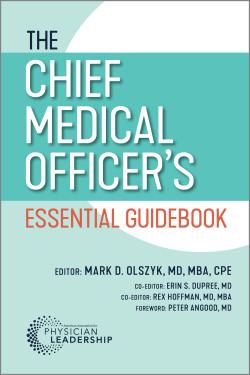Summary:
Utilization management (UM) is crucial for chief medical officers, involving removing care barriers and devising discharge solutions. UM aims to manage healthcare costs by assessing care appropriateness. Effective UM requires interdisciplinary collaboration, addressing medical necessity, resource utilization, and ensuring efficient care progression. Success depends on executive leadership, physician advisors, and case managers, emphasizing quality, patient safety, and system efficiency.
While the territory of utilization management (UM) will not be a primary responsibility of most chief medical officers, it is an area that they will most likely encounter at least monthly. Potential scenarios for their involvement include assisting in removing barriers to prevent delays in care and devising creative discharge solutions. UM can be complex with intricate relationships that are challenging to learn on the fly, but case management (CM) will be the best resource for any questions that may arise.
UM or utilization review (UR) is defined as “a set of techniques used by or on behalf of purchasers of healthcare benefits to manage healthcare costs by influencing patient care decision-making through case-by-case assessments of the appropriateness of care prior to its provision.”(1) The Centers for Medicare & Medicaid Services (CMS) Condition of Participation dictates that “the hospital must have in effect a UR plan that provides review of services furnished by the institution and members of the medical staff of patients entitled to benefits under the Medicare and Medicaid programs.”(2)
Every hospital has its unique challenges, but when it comes to UM, it is generally agreed that a case management/patient ratio will be set by the institution. For example, a community hospital with average daily census (ADC) of 200 will likely require at least 10 case managers daily as well as one full-time physician advisor (PA). UM is a team sport that requires interdisciplinary collaboration to facilitate patient movement in the continuum of care. The success of this effort depends heavily on superb communication among providers, nursing, CM, PA, and other disciplines. It is prudent to view the UM process as unconstrained by the hospital walls but one that spans all post-acute services and home.
My journey in UM started post-residency as an academician and later a hospitalist. I soon realized that the standard medical care provided during my training only scratched the surface of the services we provide our patients. It is the UM piece that supplies the context by which we offer high-quality care. Interaction with CM had become a part of our daily routine as we realized the full value of their services to provide timely, efficient care.
It was not until I became a PA at a not-for-profit organization, however, that I started to shift to a wholistic view of patient care and realized the true meaning of patient-centered care. After a couple of years as a full-time PA, I took on a CMO position and have found the PA experience to have been most fulfilling in understanding the whole continuum of care.
COMPONENTS OF UTILIZATION MANAGEMENT
Every UM plan should address the following components:
Established procedures for medical necessity, appropriate level of care, and review of extended stays of medical necessity and professional services.
Evaluation of the efficiency of healthcare services vis-a-vis the overutilization, underutilization, and misutilization of resources.
Clear identification of the responsibilities and the authority to perform all UM activities.
Patients enter the hospital through multiple points of access, including emergency department, procedural areas, surgery center, catheterization lab, interventional radiology, incoming transfers, and direct admits.(3) The ultimate goal of UM is to ensure progression of care happens in a manner that reduces delays and redundancies with appropriate allocation of resources at every level of care.
Functions of UM should include length of stay (LOS), avoidable days, care delays, readmissions, condition code 44 data, regulatory and compliance updates, Medicare 1-day stays, appeals, denials, drugs and biologicals, CMS PEPPER, observation data, and other process improvement opportunities as deemed appropriate.
Success of UM is highly dependent on support of the executive leadership team (ELT) members, physician champions including department chairs, and most importantly, the PAs.
The impact that UM has on hospital operations, quality, and cost of care is most fulfilling when alignment with several disciplines is achieved. Simultaneously, overseeing UM in a hospital setting with all the moving parts and ever-changing regulations can be overwhelming and at times discouraging. It is imperative that every CMO understand the key metrics used to scrutinize hospital overutilization, underutilization, or misutilization.
1. Length of Stay (LOS)
Average length of stay (ALOS) is arguably one of the most important internally used metrics. It represents the arithmetic average of all episodes of hospitalization totaled and calculated by subtracting day of admission from day of discharge. ALOS = Total LOS/n (n = number of patients during the month). CMS uses geometric mean length of stay (GMLOS) to estimate the allowable hospital days of a single hospital episode, eliminating the effective outlier cases.
LOS matters for multiple reasons, including patient safety. Appropriate LOS has the potential to reduce readmissions, decrease 30- and 90-day all-cause mortality, and reduce hospital-acquired infections.
From a financial standpoint, keeping the patient in a bed with no additional interventions has fixed costs associated with it, including nursing, medications, utilities, and food. Closing the gap between ALOS and GMLOS should be the focus of every efficient hospital aiming for improved quality and throughput. This can be achieved by improving the process of discharge planning and throughput, although a low-hanging fruit that is often missed centers around the improvement of the quality of physician documentation. Educating providers on severity of illness and risk of mortality will reflect positively on GMLOS, which in turn reduces the gap.
Unfortunately, incentives, especially financial ones, are not aligned between providers and hospitals. One strategy to mitigate the discrepancy is to focus on providing quality, efficient care that aims at improving the flow of patients through the continuum of care, which will result in improved LOS with all the additional potential benefits mentioned above.
Contrary to popular belief, there is no easy way to manage LOS, and as such, it should not be the task of one individual or department. LOS management relies heavily on interdisciplinary and multidisciplinary team effort with patient quality and safety pushed to the center. Creating systems of efficiency and quality offers the best chance of improving this important metric. To better understand opportunities in LOS, tracking patient avoidable days (PADs) and patient care delays (PCDs) clearly identifies potential bottlenecks for which strategies can be devised and monitored.
An often-overlooked component of LOS management is the implementation of structured multidisciplinary rounds (MDRs). Effective MDRs are timely, well-attended by several disciplines, and have a sharply outlined escalation process to progress care expeditiously. These rounds are typically, and more commonly, led by case management with input from all other disciplines, including physicians, nursing, and ancillary services. It is best to follow a standard script during MDRs and ensure all participants adhere to this very script.
2. PADs and PCDs
Identifying and trending PADs and PCDs are the cornerstone elements of efficient and timely care. Every institution should aim for a systematic process of capturing PADs and tracking them with a well-defined process of escalation to the appropriate department.
PADs are defined as waits and delays in care that result in prolonged hospital stay. This is to differentiate them from PCDs, which represent system inefficiencies that may not necessarily lead to a delay of a whole day or more but are still considered a part of the underlying system failure. Ideally, the CM team documents these potential delays with input from all other disciplines, including physicians, nurses, and ancillary services.
According to the ACMA Scope of Services & Standards of Practice for Hospital/Health System Case Management, “Case management will utilize a validated system/defined methodology for tracking avoidable days/delays and use this information to identify and communicate opportunities for improvement. Case management will participate in the development of performance improvement activities relevant to identified opportunities.”(4)
PADs and PCDs are assigned to corresponding categories based on the cause of such inefficiencies. Results of these potential avoidable bottlenecks should be presented at department meetings, UM meetings, board meetings, etc. Timely escalation of waits and delays may directly help LOS and throughput.
The greatest impact, however, revolves around identifying trends and inefficiencies in the system with a robust action plan to promote process improvement. Only when a process is hardwired and shows consistency over time, is success to be claimed and celebrated. Caution is advised on early conclusions based on insufficient and inconsistent data as it may result in resource misallocation and further progression of system failures.
THE IMPORTANCE OF PARTNERSHIPS
Throughout my PA and CMO careers, I have been successful on several occasions tackling matters such as LOS and PADs. At other times, however, I have been stymied by lack of participation from certain providers and disciplines. The example that keeps coming back in my career is when the effort is focused on targeting one individual provider to improve their metrics while neglecting the sorely needed changes in the system to improve throughput.
I have learned that the combined effort of PA and CM with the full support of the CMO provide the expertise necessary for the best solutions in this regard. Not too surprisingly, the best advice on disposition usually comes from our partners in CM, so I learned to listen to them most of the time.
Frequently, data can be misleading and inconsistent, so I learned to lean on my chief financial officer partner when all else fails, and on the CM dashboard for trends and outliers.
Finally, your PA is your best partner in driving change. Hiring one who understands your vision will prove invaluable. Strategic management of utilization and comprehension of its elements of success open vistas for CMOs to be able to effect change and provide quality care.
In summary, UM, LOS, PADs/PCDs, and instrumental processes are all necessary to achieve the six aims of healthcare quality(5): safe, effective, patient-centered, timely, efficient, and equitable.
Excerpted from The Chief Medical Officer’s Essential Guidebook edited by Mark D. Olszyk, MD, MBA, CPE.
REFERENCES
Institute of Medicine. Controlling Costs and Changing Patient Care?: The Role of Utilization Management. Washington, DC: National Academies Press; 1989.
Department of Health and Human Services Centers for Medicare and Medicaid Services. CMS Manual System. Pub 100-07 State Operations Provider Certification. Transmittal 136. March 27, 2015. https://www.cms.gov/Regulations-and-Guidance/Guidance/Transmittals/Downloads/R136SOMA.pdf .
Compass: Directional Training for Physician Advisors™ Version 2020. © 2020 American Case Management Association.
American Case Management Association. Case Management Standards of Practice and Scope of Services for Hospital/Health System Case Management. ACMA; 2007.
Institute of Medicine. Crossing the Quality Chasm: A New Health System for the 21st Century. Washington, DC: National Academy Press; 2001.
Topics
Strategic Perspective
Comfort with Visibility
Accountability
Related
A Smarter Way to DisagreeCoaching by Doctors for DoctorsThe Surprising Success of Hands-On LeadersRecommended Reading
Problem Solving
A Smarter Way to Disagree
Problem Solving
Coaching by Doctors for Doctors
Motivations and Thinking Style
The Surprising Success of Hands-On Leaders
Motivations and Thinking Style
Become an Octopus Organization
Professional Capabilities
Championing Physician Leadership Development: AAPL's Five-Decade Commitment Meets Healthcare's Critical Moment
Professional Capabilities
“Profiles in Success”: Certified Physician Executives Share the Value and ROI of their CPE Education


